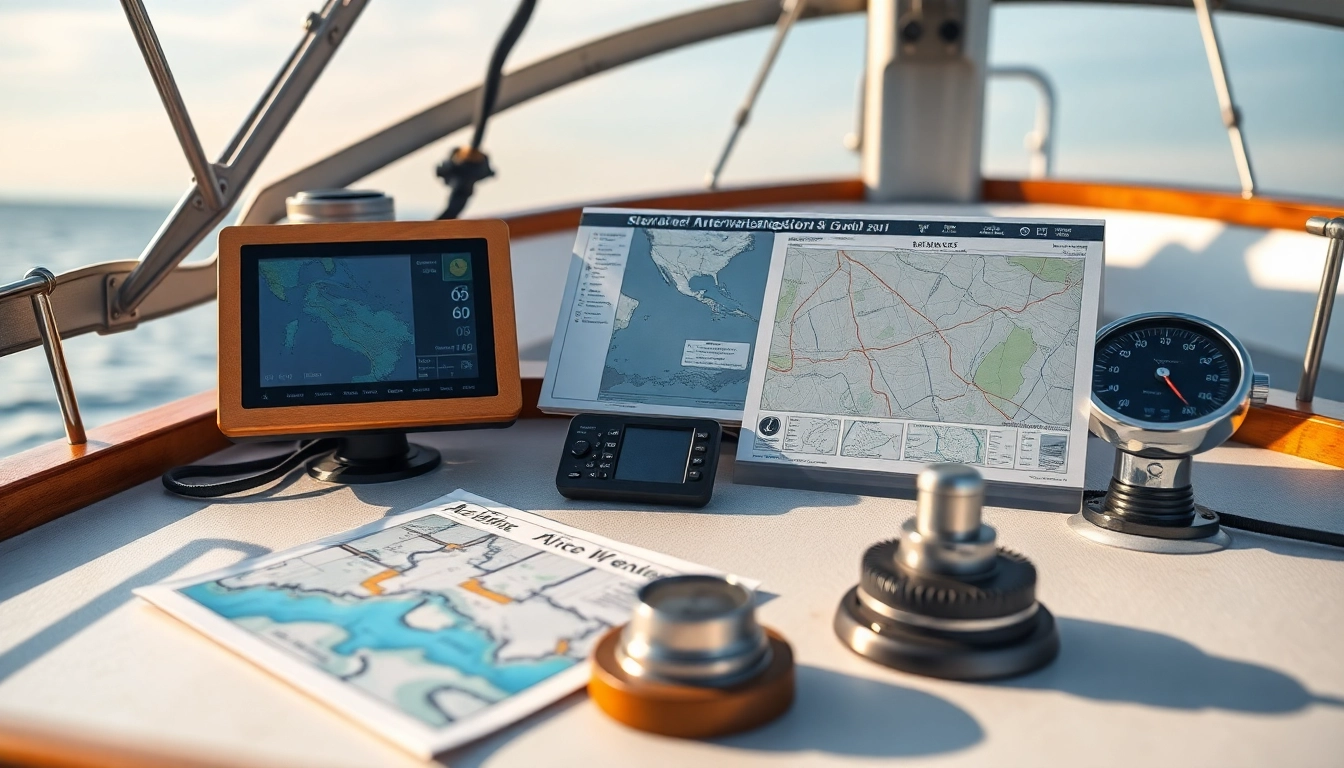Navigation on open waters demands precision, knowledge, and the right techniques to ensure safety and success. Among the various methods employed, Boots Versegelung stands out as a fundamental component of traditional maritime navigation. This comprehensive guide explores the principles, methodologies, and practical steps of Boots Versegelung, empowering sailors and boaters to master their courses even in challenging conditions. Whether you operate a recreational boat or a commercial vessel, understanding and applying these navigation techniques is vital for safe and confident journeys.
Fundamentals of Boots Versegelung: Principles and Significance
What is Boots Versegelung and Why is it Important?
Boots Versegelung, or sailing by visual bearings, is a traditional navigational method that involves estimating a vessel’s position and course based on visible landmarks and celestial cues. Unlike electronically dependent systems like GPS, versegelung relies on precise angle measurements to known objects such as buoys, coastlines, or natural features. This technique is especially crucial when electronic systems fail or when operating in areas with poor satellite coverage. Through accurate interpretation of bearings, sailors can determine their heading, avoid hazards, and maintain their course effectively.
Implementing a reliable Boots Versegelung ensures maritime safety, enhances navigational confidence, and preserves traditional skills vital for seamanship. It is a core skill for navigation in remote or GPS-denied environments, such as during long-distance voyages or in challenging weather conditions.
Important Nautical Terms Related to Boots Versegelung
Understanding key terminology is essential for mastering Boots Versegelung:
- Standlinie: A line on the chart representing a bearing from a known object, used for fixing the vessel’s position.
- Peilung: The angle or bearing from the observer to a visible object, measured with a compass or sextant.
- Winkelmessung: Angle measurement between the vessel’s heading and a landmark, crucial for accurate position fixing.
- Slotline: A line drawn based on two bearings to determine the vessel’s position relative to known points.
- Kreuzpeilung: The intersection method of two bearings to locate the vessel precisely.
A clear grasp of these terms enhances navigation precision and communication among crew members or navigational specialists.
Terrestrische Navigation vs. Versegelungbasierte Kursbestimmung
While terrestrial navigation involves land-based reference points and map reading, Boots Versegelung emphasizes natural and man-made features visible at sea. The primary difference lies in reliance: terrestrial navigation depends on fixed landmarks and advanced instruments, whereas versegelung is rooted in direct angle measurements and visual cues. Both methods can complement each other, but versegelung offers greater autonomy, especially in open waters where land features are sparse or absent.
Modern navigation integrates both techniques, combining terrestrial references, electronic aids, and traditional bearings to achieve the highest accuracy and safety standards.
Techniques and Methods of Boots Versegelung
Using Standlinien and Angle Measurement
The core of Boots Versegelung lies in establishing standlinien from known objects. A standlinie is a hypothetical line drawn on the nautical chart corresponding to a bearing taken from a landmark. To do this accurately, navigators use a compass or sextant to measure the angle between the boat’s heading and the object, correcting for magnetic variation and tilt factors. Repeating this process at different points allows for the creation of intersecting lines, narrowing down the boat’s position.
Regularly updating these bearings and cross-referencing with other navigation data reduces positional errors and improves reliability.
Peilungen and Chart Readings
Performing precise peilungen involves aligning the vessel’s compass and sighting instruments with the target object, recording the angle, and translating it onto navigational charts. Modern charts provide declination corrections and other aids to enhance accuracy. When multiple bearings are available, the intersection points form a ‘fix,’ anchoring the vessel’s position on the map.
In practice, navigators often use a combination of visual peilungen with celestial observations for improved accuracy, especially during daytime or in coastal navigation.
Incorporating Modern Instruments into Boots Versegelung
Many sailors today incorporate electronic tools such as handheld GPS, digital compasses, and electronic theodolites. Nonetheless, traditional techniques remain vital as backups. Mobile apps and digital charts now facilitate easier plotting of standlinien and bearings, enabling real-time updates and precise plotting. Handheld devices with built-in inclinometers and compasses are also used to refine angle measurements.
Understanding how to blend modern tech with classical methods creates a robust navigation strategy suitable for any scenario.
Practical Application: Step-by-Step Guide
Preparing the Navigation Equipment
Begin by assembling a comprehensive set of navigational tools: a magnetic compass, a sextant or sighting device, proper charts, pencil, ruler, and markers. Confirm calibration and ensure instruments are in good condition. Familiarize yourself with the landmarks or celestial objects you plan to use for bearings.
Having all gear ready reduces errors and speeds up data collection during actual navigation.
Performing Safe Boots Versegelung During Day and Night
Daytime navigation relies on visible landmarks, coastlines, or buoys. Take bearings at regular intervals, cross-checking with other crew members or electronic aids for verification. Use natural features such as mountain peaks, lighthouses, or known islands. During nighttime, utilize celestial navigation—using stars, planets, or the moon—to measure bearings with a sextant and establish your position accurately.
Maintaining steady hands, proper sighting angles, and applying necessary corrections are critical for successful readings.
Avoiding Errors and Ensuring Reliability
Main sources of error include magnetic declination inaccuracies, instrument misalignments, and environmental factors like currents and wind. To mitigate these, regularly calibrate instruments, correct for magnetic variation, and perform multiple measurements. Cross-referencing with other navigation data provides confirmation, while keeping a detailed log ensures traceability of positions.
Advanced Navigation Tips and Troubleshooting
Interpreting Charts and Instruments Under Different Conditions
Familiarity with chart symbols, scales, and declination adjustments enhances decision-making. During fog, rain, or poor visibility, rely more on celestial or electronic cues, corroborating them with prior bearings. Recognizing the limitations of vision-dependent techniques prompts timely usage of backup methods such as dead reckoning or electronic aids.
Common Challenges and Solutions
- Magnetic Interference: Use a gyrocompass or compensate for local magnetic anomalies.
- Environmental Factors: Currents and wind can skew position estimates, so incorporate environmental data into calculations.
- Instrument Errors: Regularly calibrate and maintain all tools; practice precise sighting techniques.
Combining experience with meticulous data recording helps identify and rectify inaccuracies promptly.
Performance Metrics for Successful Boots Versegelung
Important metrics include positional accuracy, navigational fix stability, and estimated error margins. Regularly comparing estimated positions with known waypoints or external references enhances confidence. Post-navigation reviews and logs help identify areas for improvement, ultimately leading to safer and more efficient sailing.
Advanced Techniques and Innovations in Marine Navigation
Utilizing Electronic Bearings and Navigation Aids
Modern electronic compasses, GPS-based systems, and radar enhance traditional methods, offering rapid and precise data acquisition. Devices with augmented reality overlays or integrated sensors can assist in real-time bearing adjustments, especially in complex environments.
Integrating GPS with Traditional Methods
Even with advanced technology, integrating GPS data with manual bearings ensures redundancy and increases navigational safety. Cross-verification helps detect anomalies or technical failures early, and prepares the navigator to revert to traditional techniques if needed.
Future Trends in Boots Versegelung Technology
Innovations such as AI-driven navigation, autonomous vessels, and enhanced sensor integration promise increased accuracy and safety. Augmented reality glasses displaying real-time bearings, combined with predictive algorithms, will revolutionize traditional navigation – yet, foundational skills like Boots Versegelung remain indispensable for competent seamanship.


